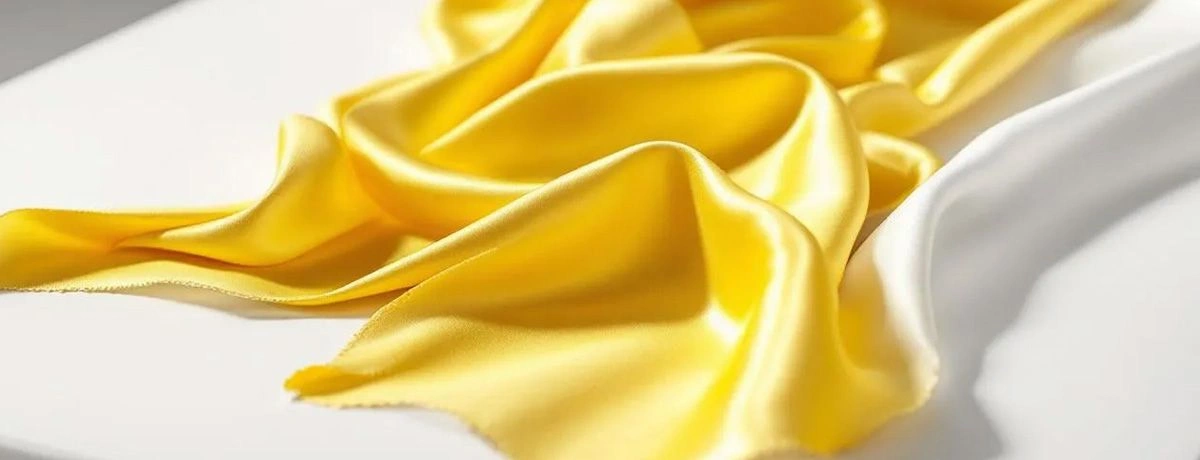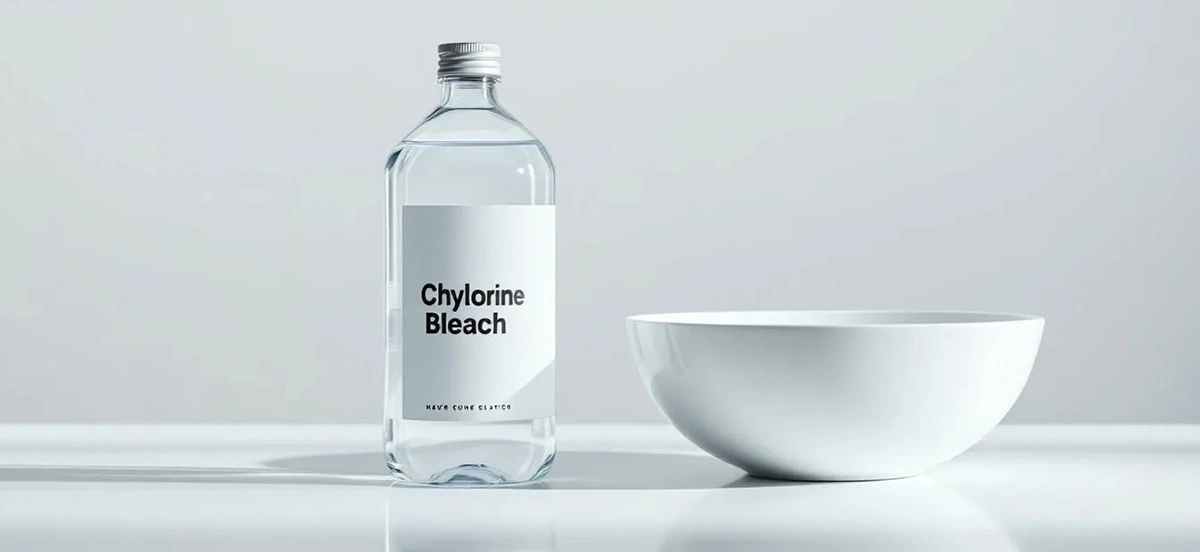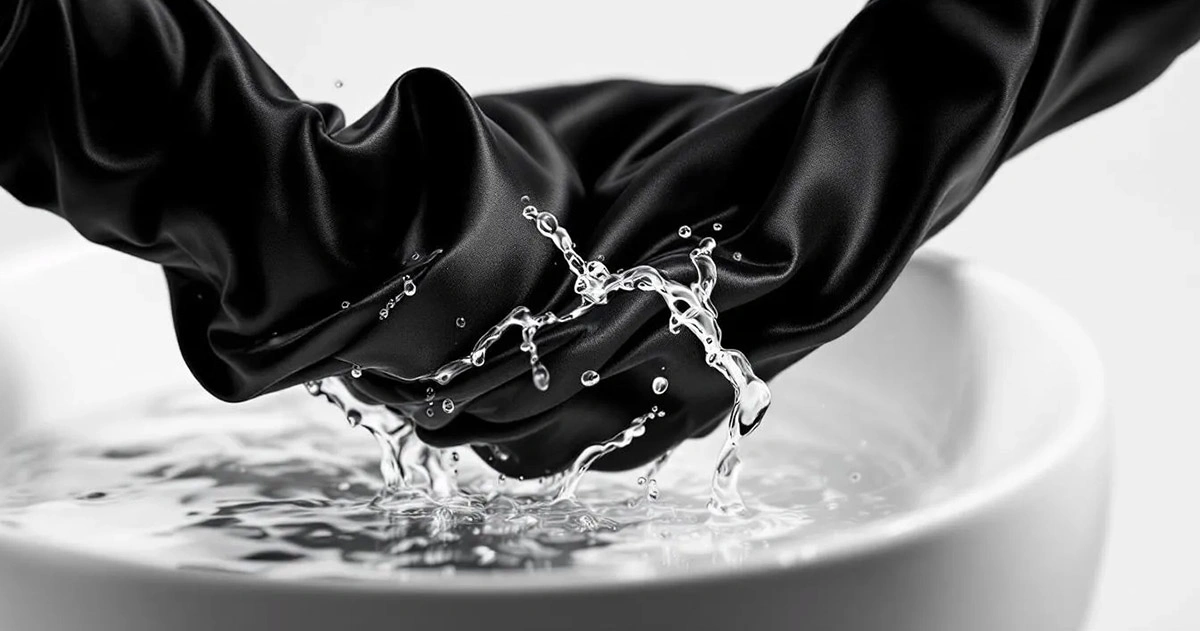Experts Reveal How to Properly Bleach Satin Fabric

Need to bleach satin fabric without ruining it? This article covers the steps to bleach satin safely, keeping its sheen intact.
Key Takeaways
-
Understand your satin fabric’s fiber composition before bleaching to choose the right method.
-
Use non-chlorine bleach to safely achieve desired results without damaging the fibers.
-
Follow proper rinsing and care techniques post-bleaching to maintain the softness and luster of satin.
Understanding Satin Fabric
Satin is a fabric that stands out for its distinctive weaving technique, resulting in a smooth, glossy surface on one side and a duller finish on the other. This characteristic shiny sheen makes satin a favorite for elegant garments and luxurious textiles. However, the term ‘satin’ refers to the weave, not the fiber, meaning it can be made from various materials.
Silk, polyester, nylon, rayon, and cotton are the common fibers used to create satin, each bringing unique properties to the table:
-
Silk satin: Renowned for its natural luster and soft texture, making it the most luxurious variant.
-
Polyester satin: More affordable and durable, making it a popular choice for everyday use.
-
Nylon and rayon: Offer a blend of affordability and sheen.
-
Cotton satin: Combines softness with breathability.
These differences are key when bleaching satin, as each fiber responds uniquely to bleaching agents. Identifying your satin fabric’s composition allows for selecting the appropriate bleaching method, preventing damage to the delicate weave that characterizes satin.
Preparing to Bleach Satin

Preparation is essential to achieving the best results and preventing mishaps. Begin by reading the care label on your satin clothing garment, which provides vital information about the fabric’s composition and compatibility with bleaching agents.
To safely use bleach on fabric, follow these steps:
-
Collect the necessary tools and protective gear, including gloves and a mask to safeguard your skin and lungs from harsh bleach chemicals.
-
Bleach is often available in powder form; select a dust-free powder for safer handling and to reduce inhalation risks.
-
Use a suitable container like a bucket for mixing the solution and fully submerging the fabric.
-
Conduct a patch test on a hidden area to gauge the fabric’s reaction to bleach, preventing unwelcome surprises.
Work in a well-ventilated area to minimize exposure to harmful fumes. Good ventilation protects your health and ensures the dust free bleaching process runs smoothly without adverse effects on the fabric.
Choosing the Right Bleach
Choosing the right bleach is vital for maintaining the integrity of satin fabric. Chlorine bleach, mainly sodium hypochlorite, can remove tough stains and disinfect but is unsuitable for satin, especially synthetic fibers, as it fades colors and deteriorates fibers over time.
Opt for non-chlorine bleach, or oxygen bleach, which:
-
Is gentler on fabrics
-
Is suitable for colored and delicate materials, including synthetic blends like polyester and nylon
-
Is versatile and effective for regular laundry care
-
Does not have the harsh effects of chlorine bleach.
Some bleach products are formulated to lift several color levels while being gentle on delicate fibers. Certain advanced bleach powders are infused with built-in reconstructors to help maintain the fabric's softness and sheen during the bleaching process.
Prepare your bleach solution with the correct proportions. A weaker mixture is typically recommended for delicate fabrics like satin to ensure effective stain removal while preserving the fabric’s softness and sheen.
The Bleaching Process for Satin
With the right bleach and preparation, start the bleaching process. Mix 2-3 cups of bleach with 2 gallons of warm water in a large container to create the bleaching solution. Pre-wash the satin fabric to remove any residues that might block the bleach from penetrating the fibers.
To bleach satin fabric safely:
-
Immerse the satin fabric in the bleach solution for about 5 minutes, stirring gently for even exposure.
-
Avoid leaving the fabric in the solution for more than 20 minutes to prevent weakening the fibers.
-
Test on a hidden area before proceeding with the entire garment to assess the reaction.
To avoid blotchy results, use a spray bottle or stencil for controlled application. This method targets specific areas needing bleaching, ensuring an even, professional finish. Once you achieve the desired level of bleaching, rinse the fabric thoroughly with cold water to remove all traces of bleach.
Rinsing and Washing Satin

Thoroughly rinse the satin fabric after bleaching to remove any remaining bleach and detergent. Residual bleach can degrade fibers over time, causing damage and discoloration. Rinse with cool water until the water runs clear.
When washing bleached satin:
-
Use a gentle detergent designed for delicate fabrics.
-
Avoid wringing the fabric to remove excess water to prevent damage.
-
Gently press out the washed water by rolling the fabric in a towel to maintain its integrity and prevent stretching or distortion.
Air dry is ideal for satin. Lay the fabric flat on a towel, avoiding direct sunlight, which can fade colors. This gentle drying process helps preserve the softness and shape of the satin, ensuring it remains beautiful and wet.
Post-Bleaching Care
Maintaining the softness and luster of satin fabric after bleaching requires special care. An amazing built-in reconstructor can help restore and maintain the fabric’s softness and shine, treating the fibers to keep them smooth and glossy, allowing them to rest. Just as some hair bleach products are designed to repair damaged hair during the bleaching process by including a built-in reconstructor, using a reconstructor on satin can help restore its softness and shine.
Avoid heat styling tools on bleached satin hair to prevent damage. Repairing damaged hair is essential for achieving healthy, shiny results after chemical processing. If ironing is necessary, set the iron to the lowest heat setting and use a pressing cloth to avoid direct contact with the fabric, preventing heat damage.
Non-chlorine bleach is extremely gentle on fabrics and better for sensitive skin and the environment. It produces fewer harmful fumes than chlorine bleach and breaks down into harmless substances, making it an eco-friendly option.
Common Mistakes to Avoid
Bleaching satin can be tricky, and avoiding common mistakes is essential for the best results. One frequent error is neglecting to wear gloves, leading to skin irritation. Treat any stains on the fabric before bleaching to prevent set-in discoloration.
Using too much bleach or not following instructions closely can damage the fabric. Use the correct proportions and adhere to recommended exposure times to avoid weakening satin fibers and losing moisture. It is important to follow this advice to fix your dyed clothes and materials, as it does matter. If you are unable to do so, the results may not be satisfactory.
Regularly check for stains and address them promptly to keep your bleached satin dress noticed looking pristine with a brush.
Tips for Maintaining Bleached Satin
Ongoing care is needed to maintain the quality of bleached satin. Rinse with cool water to prevent shrinkage, as hot water can damage the fabric. When air drying, keep satin away from direct sunlight to avoid color fading.
Store bleached satin items in a cool, dry place, away from direct sunlight to preserve the fabric’s integrity and prevent further discoloration. These tips will help keep your bleached satin looking fresh and beautiful for years.
Summary
Properly bleaching satin fabric requires careful preparation, the right materials, and meticulous attention to detail. By following the steps outlined in this guide, you can safely and effectively bleach satin, maintaining its luxurious feel and appearance. Remember to choose the right bleach, conduct a patch test, and handle the fabric gently throughout the process. With these tips, your satin will stay soft, shiny, and stunning.
Frequently Asked Questions
Can I use chlorine bleach on satin fabric?
Absolutely, avoid using chlorine bleach on satin fabric as it can cause damage. Opt for non-chlorine bleach to keep your satin looking vibrant and beautiful!
How long should I leave the satin fabric in the bleach solution?
To avoid damaging your satin fabric, leave it in the bleach solution for just 5 to 20 minutes. Remember to check it regularly for the best results!
What should I do if the satin fabric becomes stiff after bleaching?
If your satin fabric has become stiff after bleaching, rinse it thoroughly to eliminate any detergent residue and then use a fabric reconstructor to restore its softness. Taking these steps will help bring back the luxurious feel of your satin!
Can I iron bleached satin?
Absolutely, you can iron bleached satin! Just remember to use the lowest heat setting and a pressing cloth to protect it from damage.
How should I store bleached satin to prevent fading?
To keep your bleached satin looking vibrant, store it in a cool, dry place away from direct sunlight. This simple step will help protect its color and quality for years to come!
